10 Facts You Didn’t Know About Anthony van Dyck
Anthony van Dyck, a Flemish Baroque painter of remarkable skill, left an indelible mark on art history. His signature style of refined portraits and...
Jimena Aullet 24 October 2024
In the art world, it is commonly agreed upon that still life painting as a genre rose in the Netherlands in the last quarter of the 16th century. The term still life comes from the Dutch word stilleven that literally translates as “still” or “motionless” life. Here are 6 famous Dutch still life painters that you need to know!
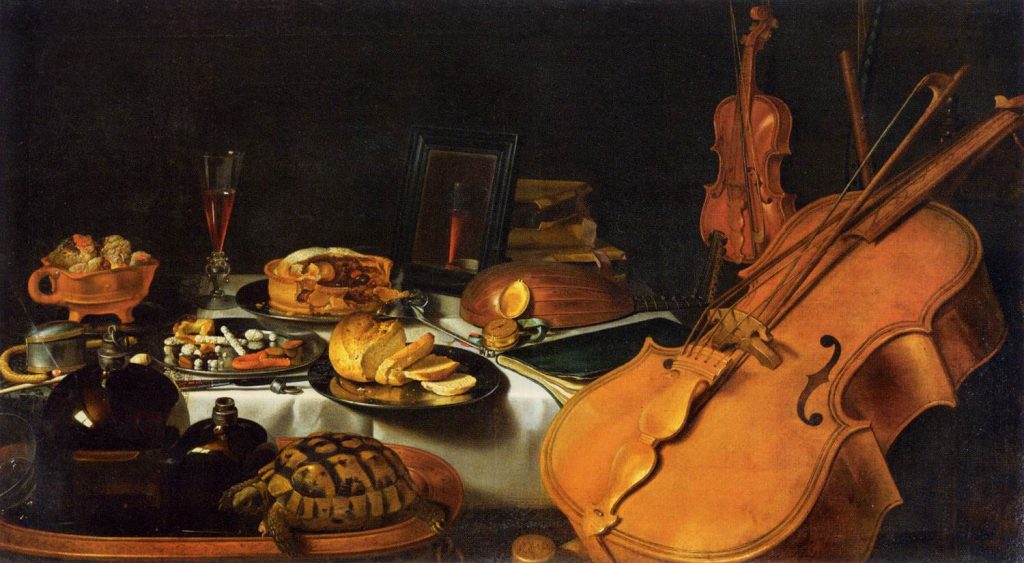
The origins of this genre have a lot to do with the Netherlands socio-religious conditions of the time. Images of religious subjects were forbidden in the Dutch Reformed Protestant Church. If we add to this the Dutch passion for horticulture, especially tulips, we get one of the first sub-genres, the Dutch flower still lifes. Another very interesting sub-genre is the kitchen and market paintings, depicting the culinary richness sustained also by the fact that the Dutch had the most powerful commercial fleet in the world, and traded everything, including spices and all other kinds of exotic fruit and foods.
This is also related to the so-called pronkstilleven (Dutch for ostentatious still life) developed by Flemish artists emphasizing abundance by depicting a diversity of objects, fruits, flowers, and dead game. Vanitas painting also became especially popular during that period. It included either a skull, an hourglass, a watch, turning pages of a book, or burning candles, that emphasized the ephemerality of earthly pleasure and induced a deeper meditation on the true meaning of life.
Born in 1568, a year before the death of his famous father Pieter Bruegel the Elder (1525/30-1569), Jan was one of the first artists to depict flower still lifes. He was even nicknamed “Flower Brueghel” or “Velvet Brueghel.” Another famous artist, Pieter Paul Rubens (1577-1640) was his close friend and collaborator. Together they created a number of works where Jan Bruegel took care of painting the natural environment and the settings, while Rubens painted the characters. The Five Senses series, now in Prado Museum in Madrid are a great example.
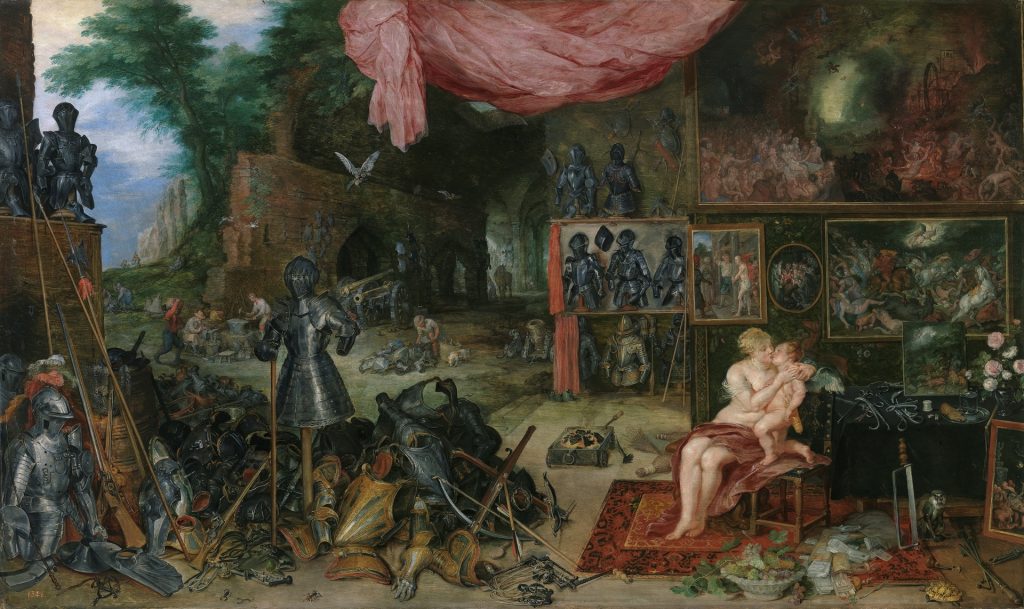
Coming back to flower still lifes as a genre, it illustrates flowers arrangements in a vase or vessel. More often than not, there is a combination of flowers from different seasons of the year, and in all stages of bloom, so they could never have been painted together directly from nature.

In the beginning, these paintings had a natural landscape or sky background. Stating with Jan Bruegel, they began being placed against dark backgrounds. He was also the one to start adding minor details such as flies, snails, butterflies in all stages of metamorphosis representing transformation and resurrection, and dragonflies symbolizing transience. They served as a display of the mastery of the painter’s skills too.
Flowers also held symbolism that had Christian connotations inherited from the Middle Ages: roses and lilies for Virgin Mary and purity, tulips for nobility, poppies for power as well as death. If you are interested in the language of flowers, here is the whole article on it.

This painting is a real visual encyclopedia. Among the dozens of species and varieties of flowers, some of them studied for months in the garden of Brussels by Archduke Albrecht of Habsburg, are hidden about 20 types of insects. Flowers blossom and fade away, caterpillars metamorphose into a chrysalis and then into butterflies, measuring the passage of time and suggesting the cyclical nature of life. The contemplation of the painting thus becomes an occasion for meditation on the fragility and ephemeral character of beauty and life, but also on the divine nature of art. Just the buzzing of the fly on the edge of the vessel seems to interrupt this meditation.
Here comes Clara Peeters, the first lady of the Dutch still life! It is not known when or where exactly she was born, nor when or where she died. This is not unusual for women in general in the 17th century because they were not taken seriously as artists, as their main purpose was to become good wives and mothers. There are no records of her in the local Guild of Saint Luke either. Like most of the women painters of her time, she must have been a daughter of a painter and so, not required to be included in the apprenticeship records, but this is just a supposition. Some even suggest Jan Bruegel the Elder as a possible teacher. Nevertheless, we know from her work she was active between 1607 and 1621.
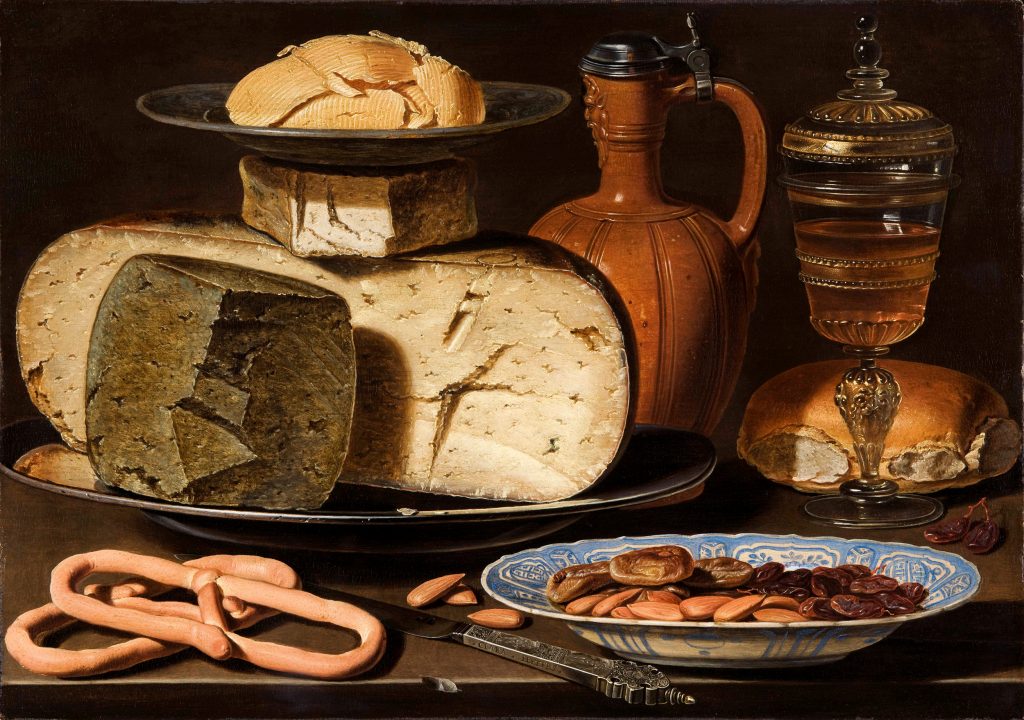
Peeters was an accomplished painter. Her style is lifelike, objects appear casually laid on the table in apparently random order, and detailed, the painter has provided a clear and frontal view of all that is displayed. She specialized in still life compositions with a variety of objects. Some are natural objects like fruit and flowers, others are goblets made of precious metals and ceramic bowls. Cheese, pies, and fish together with other common or more exotic foods are also present in her work.
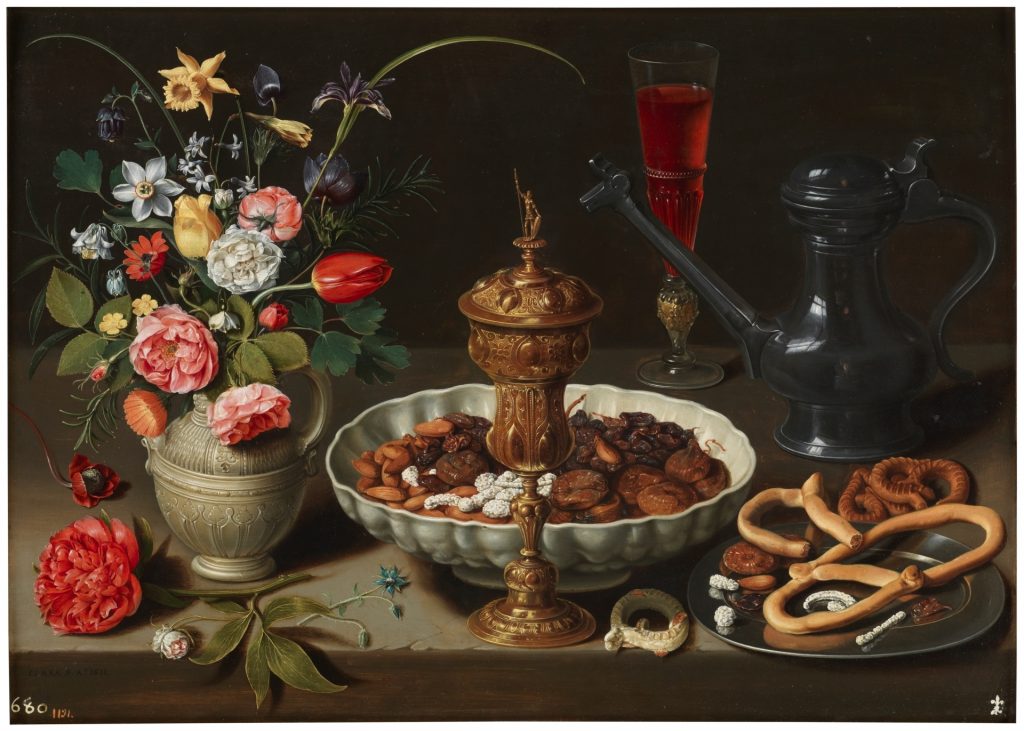
Nonetheless, probably she is most famous for enriching her still lifes with her hidden self-portrait reflected in the objects on the table. In the image above, Still Life with Flowers, a Silver-gilt Goblet, Dried Fruit, Sweetmeats, Breadsticks, Wine and a Pewter Pitcher, the artist painted her portrait three times in the goblet and four times on the pewter jug. The abundance of self-portraits in her painting is a form of assertion. Aside from having a role as a signature, painting reflections were a challenge to artists to show off their mastery, which was even recorded in the literature of the time.
She also had a particular way of signing her work, often hidden. Six out of her 39 known paintings include the same ornate silver knife that is inscribed with her name, Clara Peeters.
Willem Claesz. Heda was a Baroque painter who specialized in monochromatic still lifes. Born in 1594 in Haarlem, he achieved recognition in his own lifetime by the Dutch Minister Samuel Ampzing and the Haarlem Guild of St. Luke. He was unquestionably one of the greatest masters of the genre. His early work focused on vanitas still lifes. Vanitas as a genre derives from the 15th century morbid obsession with death, also seen in the Ars moriendi, and the motif of the memento mori. All the included elements urge us to meditate upon the ephemeral nature of life and the possibility of sudden death.
Later he specialized in breakfast pieces, tabletop still lifes displaying an array of food, including cheese, fruit, and bread. He mastered the illustration of light reflected on surfaces of different textures like glass, silver, brass candlesticks on perfectly draped fabric. His work is characterized by sublime simplicity and order that few artists of his genre ever obtained. Heda’s still lifes are not depicted as ready to eat, but rather indicate human actions that have already taken place. Therefore the objects are disarranged, the pie partly eaten, the lemon half-peeled, and the shells of the hazelnuts scattered across the table.
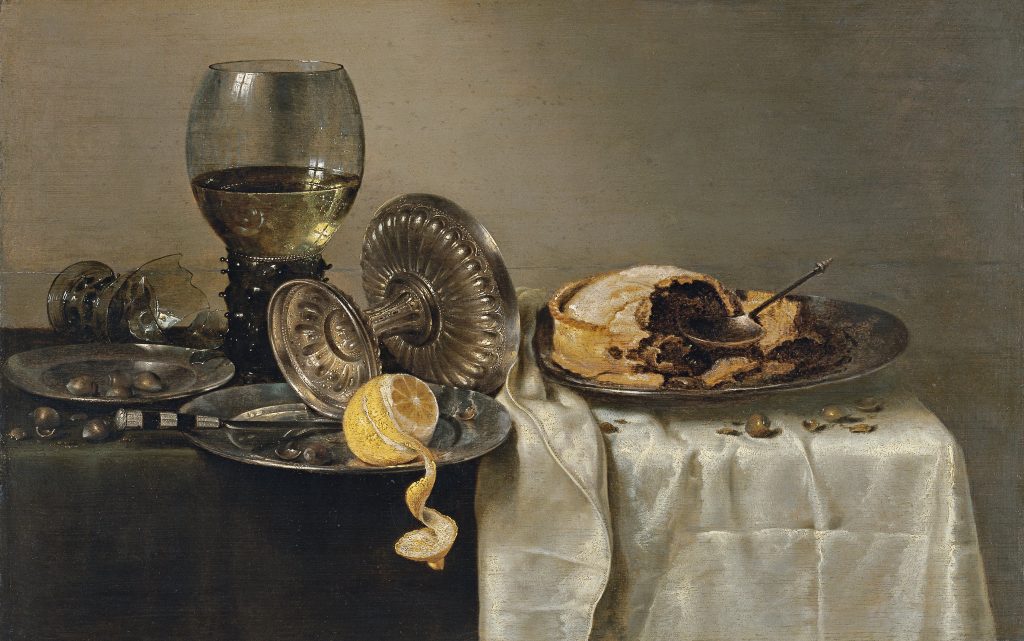
The lemon, almost always cut with a curl of peel, was first introduced by Heda’s contemporary Pieter Claesz in 1621. Art historian Mariët Westermann, in a lecture entitled The Dutch Abroad and What They Brought Back: The Lemon’s Lure, explained that she believes that the peeled lemon was a motif that engaged three predominant interests in Dutch society at the time: commerce, natural history, and paintings. It was a luxury product, a symbol of luxury, and a sign of wealth.
To have lemon on your table was a sign of having arrived in society, as much as a Mercedes or a Louis Vuitton bag is today.
James Langton, When still-life gives you lemons: the significance of the citrus fruit in art and history, 29th January 2020, The National: Arts & Culture.
Jan Davidsz. de Heem studied under his father, David de Heem the Elder in Haarlem, where he was born in 1606. Later he studied with Balthasar van der Ast, considered to be a pioneer in the genre of shell painting, whose influence is visible in Jan’s work. Jan de Heem was considered the best still life painter in his time.
After moving to Antwerp in 1631, he changed his style from the previous, almost monochrome painting of musical instruments and books to a vividly colored and elegant style, painting fruit and flowers with meticulous detail. All kinds of hungry insects populate this still life.
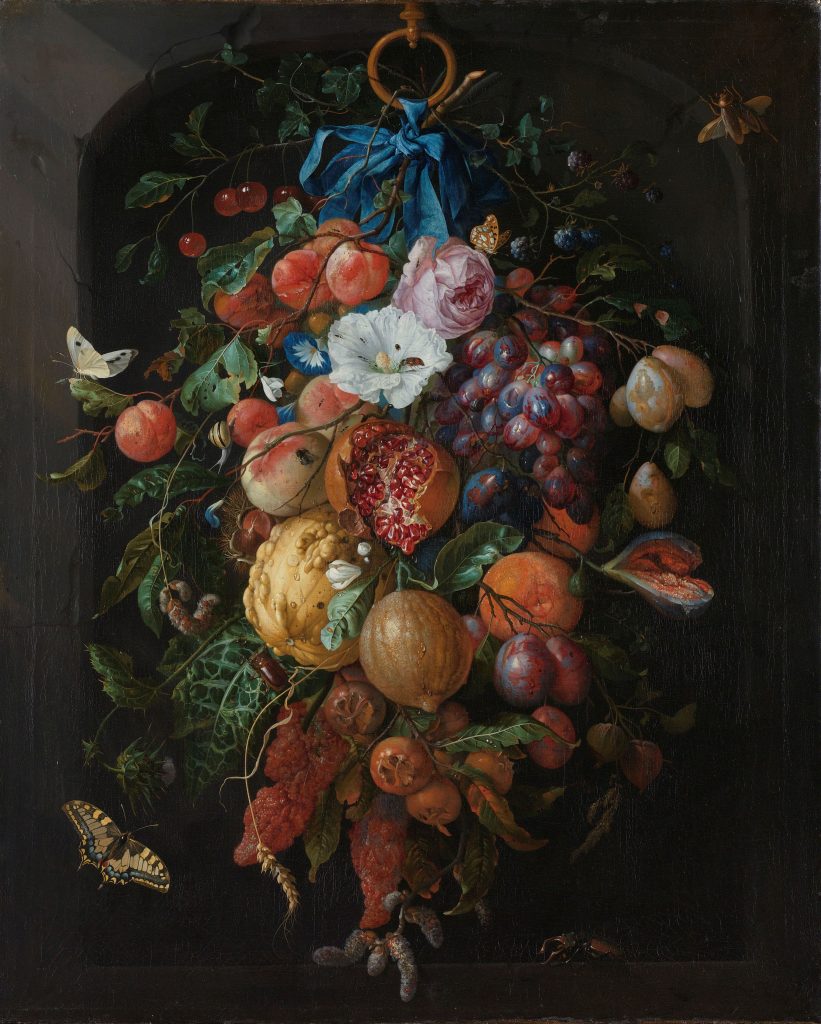
Often he would convey a moral or illustrate a motto: a snake lying coiled under grass; a skull on plants in bloom. Gold and silver cups or tankards are suggestive of the vanity of earthly possessions. Salvation is seen allegorically as a chalice amid blossoms, and death as a crucifix in a wreath.
Joann Lacey in History of Art and Architecture: Volume II, 2021.
His son, Cornelis de Heem, was not quite the equal of Jan, but many of his paintings are preserved in museums in the Hague, Vienna, and elsewhere. Jan’s younger brother, David Davidsz. de Heem, and Jan’s eldest son, David Jansz. de Heem were also well-known painters.
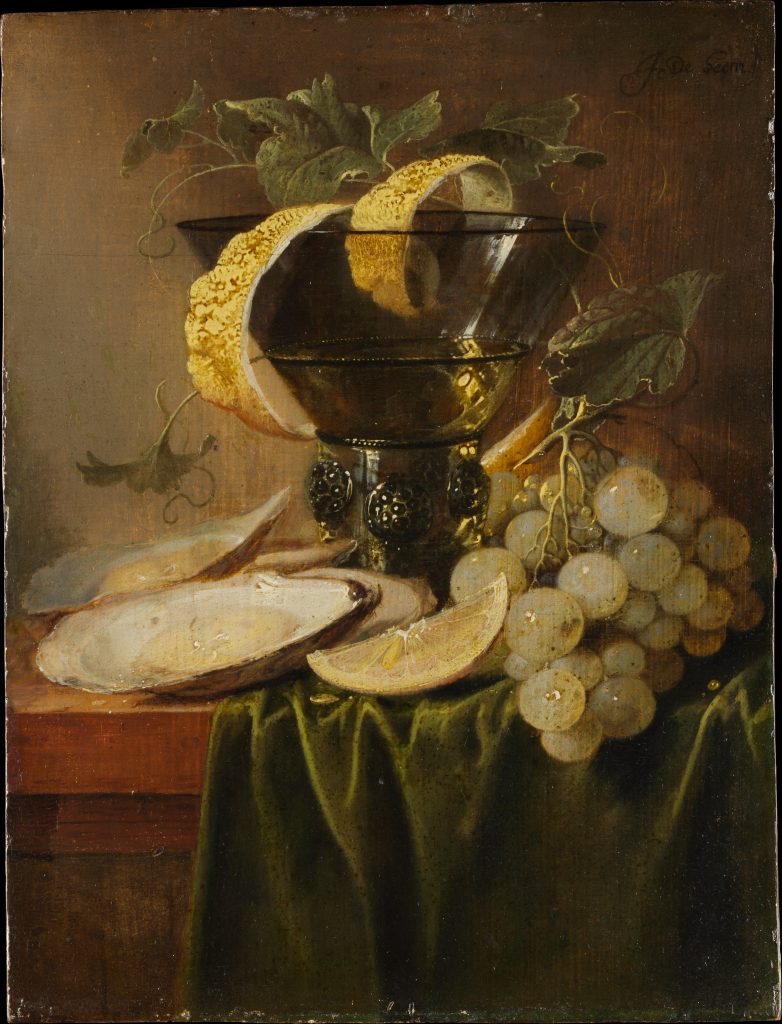
De Heem’s Still Life with a Glass and Oysters served as great inspiration for the American award-winning poet and memoirist Mark Doty. He was so impressed by de Heem’s painting, that he wrote an entire book about it.
As a writer one is always trying to fix things in time or hold a moment up to the light so it can be seen, really as long as anybody cares to read it. This painting does exactly that: it holds up a moment lost, a moment suffused with feeling. I don’t know that we can say what the feeling was. Is this longing? Is there a sadness about this picture? Is it a moment of complete pleasure? It seems a little ambiguous to me. A moment of real emotion, in other words.
Mark Doty, Fleeting Moments.
The large drinking glass you see in the painting above is called a rummer also known as Römer or Roemer, popular in the Netherlands from the 15th century. The base was built up by coiling strands of molten glass around a conical core, the stem studded with prunts to ensure a safe grip and an oval bowl. They were often depicted in Dutch and Flemish still life paintings, starting with Pieter Claesz (c. 1597-1660).
Willem Kalf (1619-1693) was one of the most celebrated, sought-after, and successful still life painters of the 17th century. The son of a prosperous textile merchant, he was born in Rotterdam in 1619. Not much is known about his early years but in the 1630s we find him in Paris in the circle of the Flemish artists in Saint-Germain-des-Prés. It is here that he starts painting still lifes.
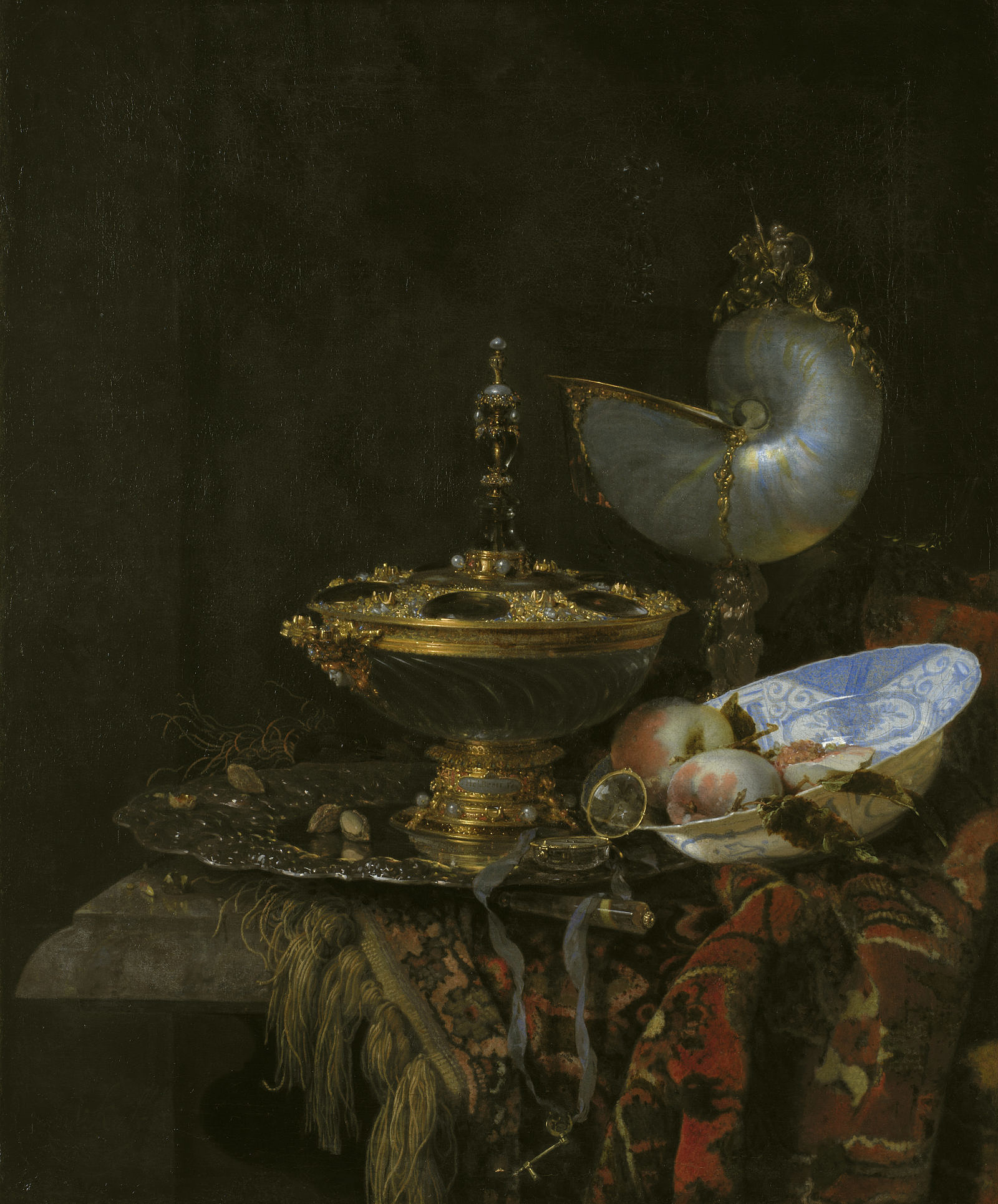
It is in his later works that Kalf starts including sumptuous objects, like a Venetian wine glass with its filigree glass cover, a damask cloth, a Persian carpet, gold and silver vessels (many of which have been identified as work of the well-known goldsmith of the time, Johannes Lutma). Also, almost always a Chinese Ming porcelain bowl appears in his paintings. The influence of Dutch artists such as Pieter Claesz or Willem Claeszoon Heda is visible in Kalf’s use of semi-monochrome style.
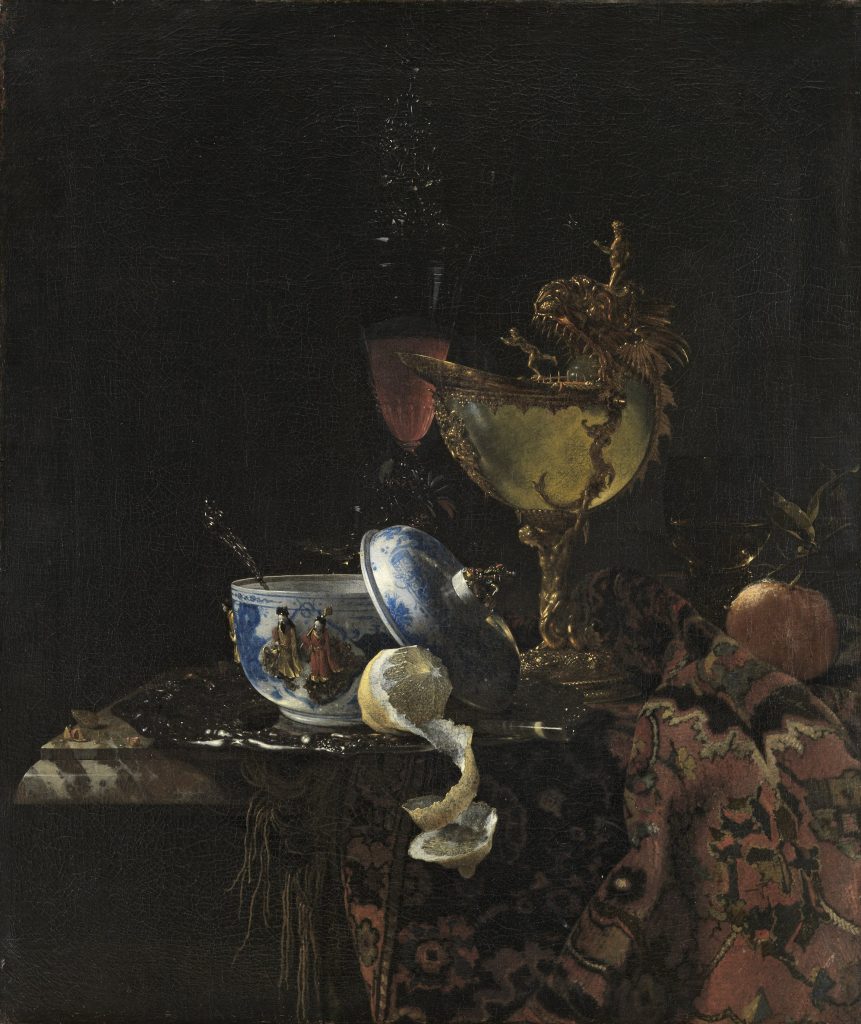
The nautilus cup is a distinctive element of Willem Kalf’s paintings, together with the Ming bowl. Nautilus shells were brought from the distant Indian Ocean. They were a sign of wealth and prosperity. Therefore nautilus cups were often used in still life paintings because they were exotic and beautiful. The combination of metal and shell allowed the artist to experiment with light and shadow, challenging him with metallic reflections and translucent materials. The shell itself appears to be the body of the fantastic sea monster—which, in fact, is the Biblical whale that swallowed Jonah. You can just make out the figure of Jonah trying to avoid the teeth, almost as if he is going to dive into the nautilus for safety.
Rachel Ruysch (1664-1750) was an extraordinary woman who achieved international fame during her own lifetime, worked as a court painter, and had a career that spanned over six decades all while having a husband and ten children. She was a true Marie Curie of the art world!
Her grandfather, the architect Pieter Post, was also a professor of anatomy and botany. He had a vast collection of animal skeletons and mineral and botany samples that Ruysch used for practice. At the age of 15 we find her as an apprentice in Amsterdam. Here not only does she master the art of painting, but also learns how to arrange a bouquet in a vase so it would look spontaneous and less formalized, producing a more realistic and three-dimensional effect. At 18 she was already producing and selling independently signed works.
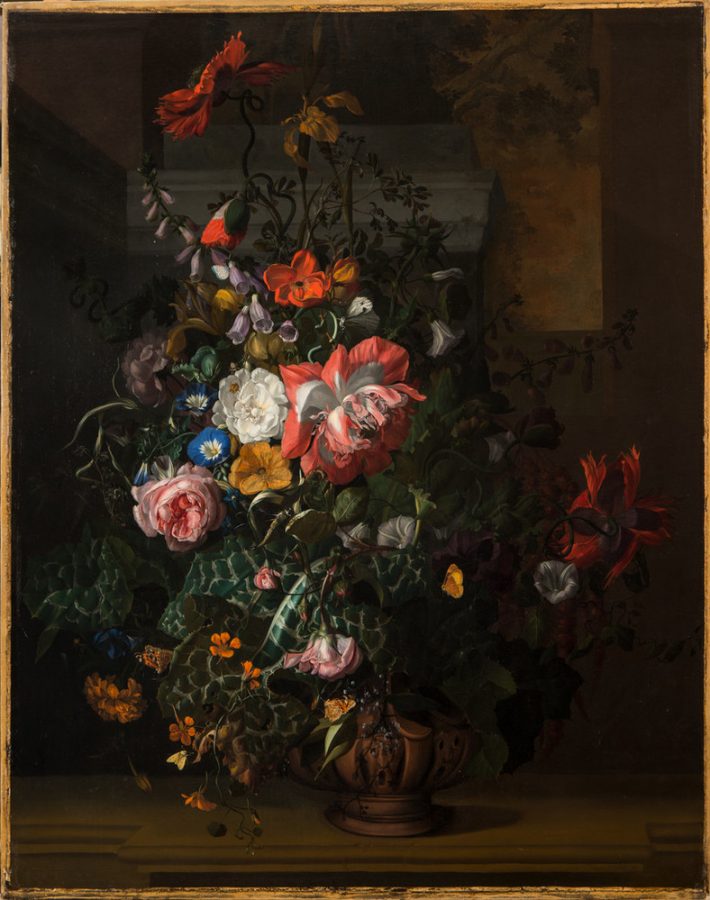
When she moved back to The Hague, she was offered membership in the Confrerie Pictura as their first female member and in 1701 she and her husband, who was also a painter, became members. In 1708, Ruysch was invited to work for the court in Düsseldorf and serve as court painter to Johann Wilhelm.
Her playful composition and brilliant colors are typical of the Rococo movement. Extreme importance is given to detail through delicate brushstrokes. Even if the background of Ruysch’s paintings is usually dark, almost always the light falls in the center, creating a mysterious feeling. Her works are lifelike and you expect at any moment to be surrounded by the smell of the bouquet or to see the butterfly flying towards you.
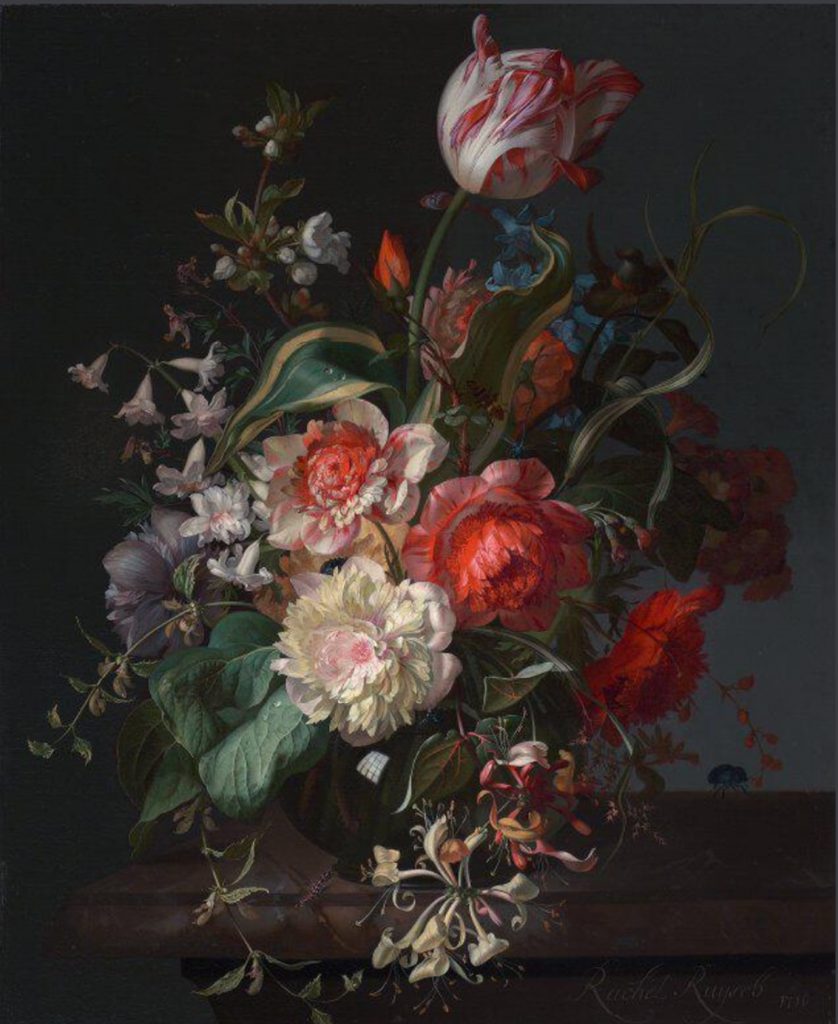
During her 86 years she produced hundreds of paintings out of which more than 250 are known today. Her dated works establish that she painted from the age of 15 until she was 83, a few years before her death. Historians were able to establish this with certainty because of a distinctive detail, she included her age when signing her paintings. A smart one she was, indeed!
DailyArt Magazine needs your support. Every contribution, however big or small, is very valuable for our future. Thanks to it, we will be able to sustain and grow the Magazine. Thank you for your help!